In this article, i will clear your mind for desalination plant cost. Chunke Water Treatment has finished over +500 projects for brackish water desalination system BWRO, Sea Water Desalination Plant SWRO worldwide.
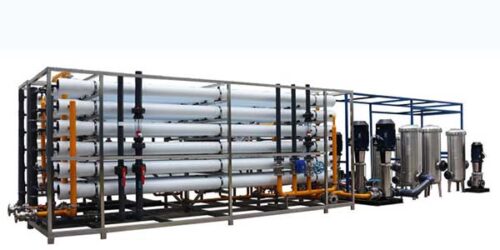
Before understand What is the cost to build a desalination plant? First we check history of desalination plant.
History of Desalination Plant
In the 1960s, desalination emerged as one of the most important means of treating saline water to bring it to accessible drinking water quality standards for use in various parts of the world and industrial sectors. Firstly, the effects of climate change, population growth. And finally, the rise of industrialization has played a significant role in water scarcity. And have had a substantial impact on water demand.
A large number of countries in Africa (Nigeria, Morocco, Mauritania, South Africa, Senegal, Madagascar, Tanzania, Kenya, Somalia, Algeria, Tunisia, Egypt), the Middle East (Saudi Arabia, Kuwait, Qatar, UAE United Arab Emirates, Oman, Yemen, Iran, Jordan. Iraq) and Asia (China, Japan, Philippines, Indonesia, Malaysia, Singapore, Sri Lanka, India, Kazakhstan, Mongolia, Vietnam, Thailand) are under serious freshwater stress and are facing a projected increase in water scarcity well into 2025. It is also important to note that almost 40 percent of the world’s population lives within 100 km of an ocean or sea, thereby justifying seawater desalination as an integral part of the globe’s response to water scarcity.
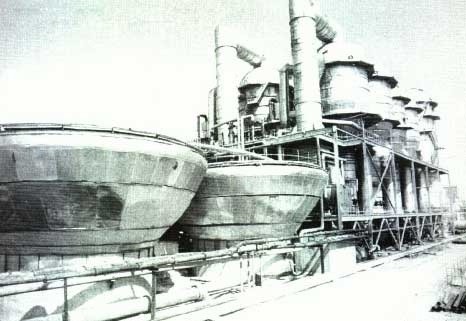
First desalination plant in the world:
The first sustainable desalination plant built in 1938 in present day Saudi Arabia. In the United States, the process of desalination became popular in the 1960’s after John F. Kennedy supported desalination in order to reduce poverty by increasing the amount of clean water in the United States. Kennedy allocated $75 million to the Office of Saline Water to increase research on desalination. In 1982, Ronald Reagan’s administration cut federal funding for desalination. It was not until 1996 that Senator Paul Simon created the Water Desalination Act which authorized $30 million over six years for desalination research while limited funding for desalination until 1996. The city of Santa Barbara, California completed a desalination plant in 1992 as the result of a drought. The construction of desalination plants has changed over time to limit the amount of energy used in order to decrease maintenance costs of each plant accordingly.
Which Technology Is Used for Desalination?
The most prevalent forms of desalination can be into two technology types:
Thermal desalination (using heat energy to separate distillate from high salinity water), represented primarily by Multiple Effect Distillation (MED) and Multi-Stage Flash distillation (MSF). Mechanical Vapor Compression (MVC) is primarily used to desalinate high TDS (> 50,000 mg/l) and/or industrial wastewater for the purpose of reuse and not necessarily potable uses accordingly.
Reverse Osmosis (RO) membrane separation, which uses a membrane barrier and pumping energy to separate salts from high salinity water (typically < 60,000 mg/l).
Meanwhile, Chunke is a reverse osmosis water treatment plant manufacturer from China. Therefore, in this article we will focus mostly on reverse osmosis desalination plant.

What Is the Total Desalination Capacity in the World?
According to the new International Desalination Association (IDA) Water Security Handbook, the total global installed desalination capacity stands at 97.4 million cubic meters per day (m3/day). While, the total global cumulative contracted capacity is 104.7 million m3/d.
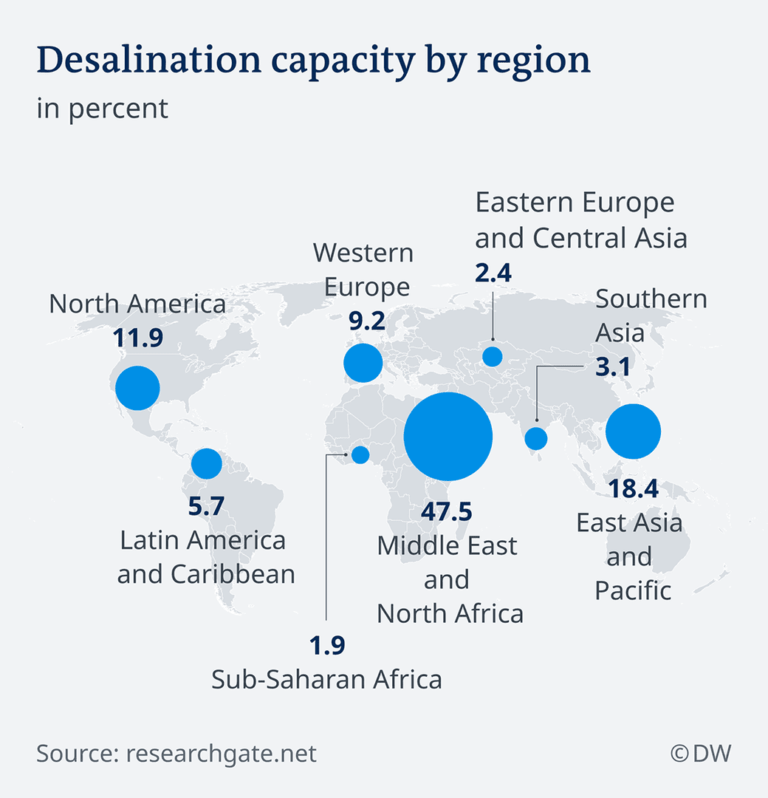
What are the World’s Largest Desalination Plants?
As reported by Aquatech Global Events, the Rabigh 3 project recently awarded in Saudi Arabia was considering one of the world’s largest plants, with a capacity of 600,000 m3/day. However, there are much larger desalination plants in operation around the world. Below is a list of five of the world’s largest projects.
Ras Al Khair, Saudi Arabia: 1,036,000 m3/day:
Commonly regarded as the desalination heavyweight of the world, the massive Ras Al-Khair is a hybrid project that uses both thermal multistage flash (MSF) and reverse osmosis (RO) technologies. Located 75km north-west of Jubail and serving Riyadh, the site also has a substantial power generation component, with a capacity of 2,400MW. The main contractor for plant construction was Doosan and its consortium partner Saudi Archirodon, with Poyry acting as the consultant for the project.
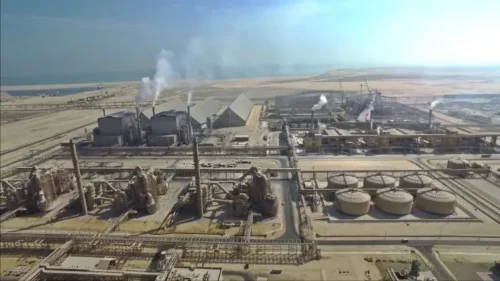
Taweelah, UAE – 909,200 m3/day:
The Emirates Water and Electricity Company and ACWA Power, have signed the water purchase agreement, for the world’s largest sea water reverse osmosis desalination plant to be constructed at Taweelah Power and Water Complex, 50 km north of Abu Dhabi. ACWA Power, with the lead developer of the project and a 40 per cent shareholder, confirmed the successful financial closing of the world’s largest SWRO plant, at a cost US$847m, has the tariff of desalinated water 49.05 cents/m3. Construction of the project commenced in May 2019 with completion expected in October 2022. The plant is expected to deliver 909,200 cubic meter of water a day. Once complete, the Taweelah power and water development is expected to raise the emirate’s proportion of desalinated produced water by RO from 13 per cent today to 30 per cent by 2022.

Shuaiba 3, Saudi Arabia – 880,000 m3/day:
A consortium involving Siemens of Germany for the power plant and Doosan for the thermal desalination plant were selecting by ACWA Power to provide project engineering, procurement and construction of the plant. One expansion to the plant has completed and one expansion is in the final construction stage with a total additional 400,000 m3/day of RO capacity added, according to ACWA Power. When complete, Shuaiba will eventually overtake Ras Al Khair as the largest operating desalination plant with total capacity of 1,282,000 m3/day.
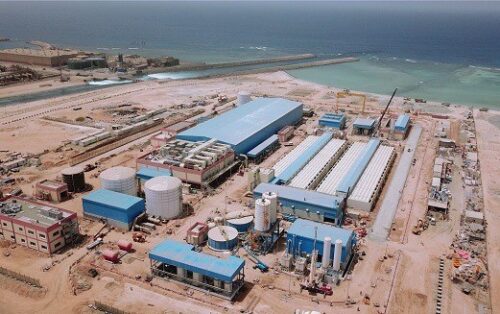
Sorek, Israel – 624,000 m3/day:
Sorek could be the heavyweight membrane plant of the world in operation with an enormous 624,000 m3/day capacity. Located 15km south of Tel Aviv in Israel and developed by IDE Technologies, the project was and continues to be unique in the use of 16-inch seawater reverse osmosis membranes but in a vertical formation. A further development – Sorek 2 – IDE Technologies and Bank Leumi have won the Israeli government’s PPP tender to build and operate the Sorek 2 water desalination plant. IDE has now won four of the five tenders to operate desalination plants in Israel. The bid, with an unprecedented price of USD 0.41 per cubic meter of water, calls for the annual production of 200 million cubic meters of water (nominal capacity of 548,000 m3/day). Once complete, Sorek 2 will be the sixth desalination plant to operate in Israel alongside Hadera, Ashkelon, the first Sorek, Palmachim and Ashdod.
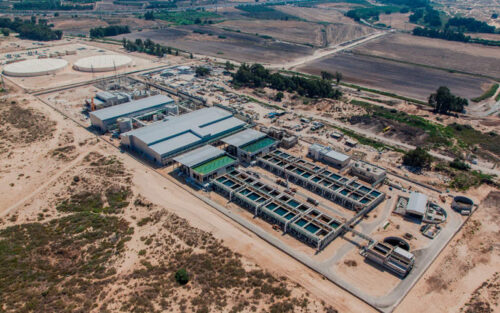
JUBAIL 3A IWP - 600,000 m3/day:
This year in April 2020 The 25-year water purchase agreement signed with the Saudi Water Partnership Company (SWPC) by a consortium led by ACWA Power including Gulf Investment Corporation (GIC) and Al Bawani Water & Power Company (AWP). Under the terms of the partnership, the consortium led by ACWA Power will design, construct, commission, operate and maintain the desalination plant as well as associated potable water storage and electrical special facilities. The ACWA consortium submitted the lowest levelised water cost of USD 0.41 per m3. With an investment value of USD $650 million, the Jubail 3A Independent Water Plant (IWP) will generate 600,000 m3 of potable water/day. The greenfield seawater reverse osmosis desalination project will be in Jubail, Kingdom of Saudi Arabia. The Engineering Procurement Construction contract got award to a consortium consisting of Power China, SEPCO-III and Abengoa.
What Is The Cost Of Desalination Plant?
Desalination Plant Cost or Price is depend on some mjaor factors. These factors are desalination technology, raw and product water quality, type of intake and outfall, the location of the plant or project, the type of energy recovery used, the price of electricity, post-treatment needs, storage, distribution, local infrastructure costs, and environmental regulations.
First, you decide the capacity as liter per hour or m3/day.
We can divide water desalination plant into 3 groups:
1. Commercial small size desalination plant
2. Industrial Big Size Desalination Plant
3. Huge – Mega Size Desalination Plants
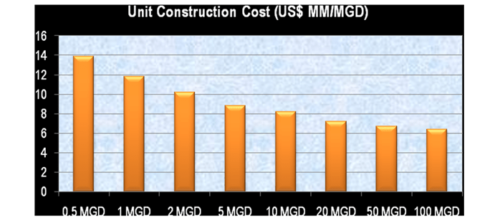
And also water source is important for cost. BWRO Brackish Water Desalination Plant Cost is less than SWRO Seawater Desalination Plant cost.
To get more information about commercial brackish water desalination system, industrial brackish water desalination plant, commercial sea water desalination plant and industrial seawater desalination system, please click the links accordingly.
For seawater desalination plant cost to give reference, i am sharing cost of some projects in the world and indicating cost per capacity.
For example, a medium size 10 MGD SWRO plant would cost about $80 million to build and a large plant, such as the 35 MGD Carlsbad SWRO plant near San Diego, would be expected to cost $250 million.
Typical Swro Desalination Plant CAPEX And OPEX Breakdown
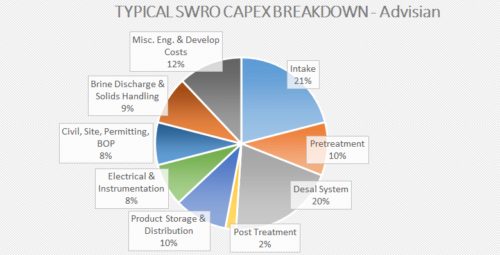
CAPEX means initial capital expenditure (the main components of associated capital cost) and OPEX means operational expenditure (operation and maintenance cost).
Desalination plant cost can breakdown in the following elements: fixed cost (37 per cent), labour (4 per cent), membrane replacement (5 per cent), maintenance and parts (7 per cent), consumables (3 per cent) and electrical energy (44 per cent).
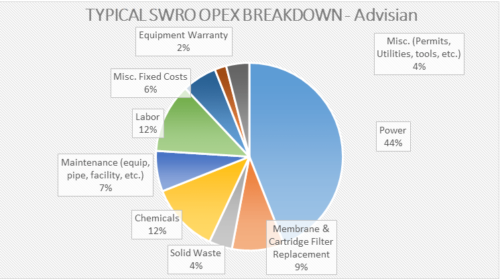
Desalination is historically as a more expensive option compared with traditional treatment of surface or groundwater, with prices approximately US$1 per cubic metre ($/m3). However, one of the latest breakthroughs in desalination has been an improvement in the overall cost, including operational expenditure (OPEX), as well as the initial capital expenditure (CAPEX). Over the last 20 years, this has reduced by 80 per cent as a result of advances in technology and equipment.is
Very recently, project tenders in Abu Dhabi, Saudi Arabia and Israel have seen the price fall below $0.50/m3 for the first time. “After a decade in which price drifted upwards as a result of high materials costs and higher energy costs, this is very good news. Indeed, we expect 2019 to be the best year ever in the desalination market,” said Christopher Gasson, publisher of GWI.
With seawater desalination at $0.40/m3, the cost is approaching the indirect potable reuse, with prices in the $0.30-$0.40 range.

How much does it cost to desalinate 1 gallon of water?
How much does desalination plant cost? Advancements in reverse osmosis technology have brought desalination costs closer to other alternatives. Ten years ago, desalinated water cost more than $9 per 1000 gallons, but today, the range is $2 to $5 per 1000 gallons for commercial and industrial reverse osmosis desalination systems.
